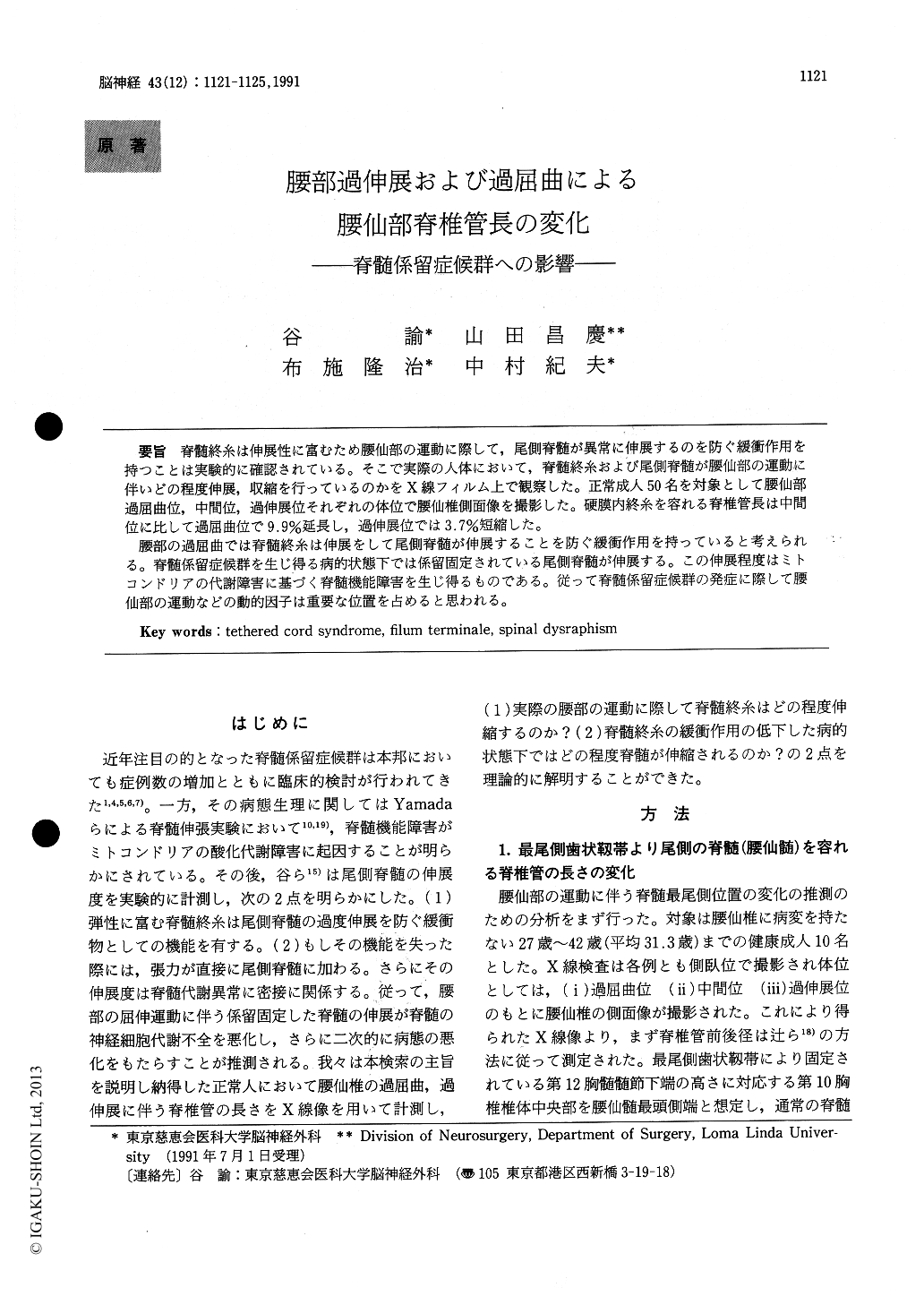Japanese
English
- 有料閲覧
- Abstract 文献概要
- 1ページ目 Look Inside
脊髄終糸は伸展性に富むため腰仙部の運動に際して,尾側脊髄が異常に伸展するのを防ぐ緩衝作用を持つことは実験的に確認されている。そこで実際の人体において,脊髄終糸および尾側脊髄が腰仙部の運動に伴いどの程度伸展,収縮を行っているのかをX線フィルム上で観察した。正常成人50名を対象として腰仙部過屈曲位,中間位,過伸展位それぞれの体位で腰仙椎側面像を撮影した。硬膜内終糸を容れる脊椎管長は中間位に比して過屈曲位で9.9%延長し,過伸展位では3.7%短縮した。
腰部の過屈曲では脊髄終糸は伸展をして尾側脊髄が伸展することを防ぐ緩衝作用を持っていると考えられる。脊髄係留症候群を生じ得る病的状態下では係留固定されている尾側脊髄が伸展する。この伸展程度はミトコンドリアの代謝障害に基づく脊髄機能障害を生じ得るものである。従って脊髄係留症候群の発症に際して腰仙部の運動などの動的因子は重要な位置を占めると思われる。
This clinical research has been conducted to extend the understanding of pathophysiological mechanism involved in the tethered cord syndrome. In normal individuals, the filum terminale has elas-ticity similar to the rubber band. This allows ce-phald or caudad movement of the lumbosacrococ-cygeal spinal cord while the spine is flexed or extended. This is based on the observation that the lowest pair of dentate ligaments spans from the T12 and L1 junction of cord segments to the dura between the dural exit of T12 and L1 nerve roots, and the spinal cord below T12 can freely ascends on flexion and descends in the spinal cannal on exten-sion of the spine. In 50 healthy human subjects, x-ray films of the thoracolumbosacral spine were studied. Lateral films of the spine were taken in the neutral, hyperextended and hyperflexed positions. The first group included 10 individuals whose ages ranged from 27 to 42 years. The distance between the middle of the T10 vertebra and L1-L2 interspace was measured. This distance was considered to represent the length of the lumbosacral cord seg-ment (L1 through coccygeal cord segments) . The second group included 40 individuals whose ages ranged from 17 to 50 years. The distance between the L1-L2 interspace and S1-S2 interspace was measured. The distance signified the distance between the caudal end of the spinal cord and attachment of filum terminale to the sacrum.

Copyright © 1991, Igaku-Shoin Ltd. All rights reserved.


